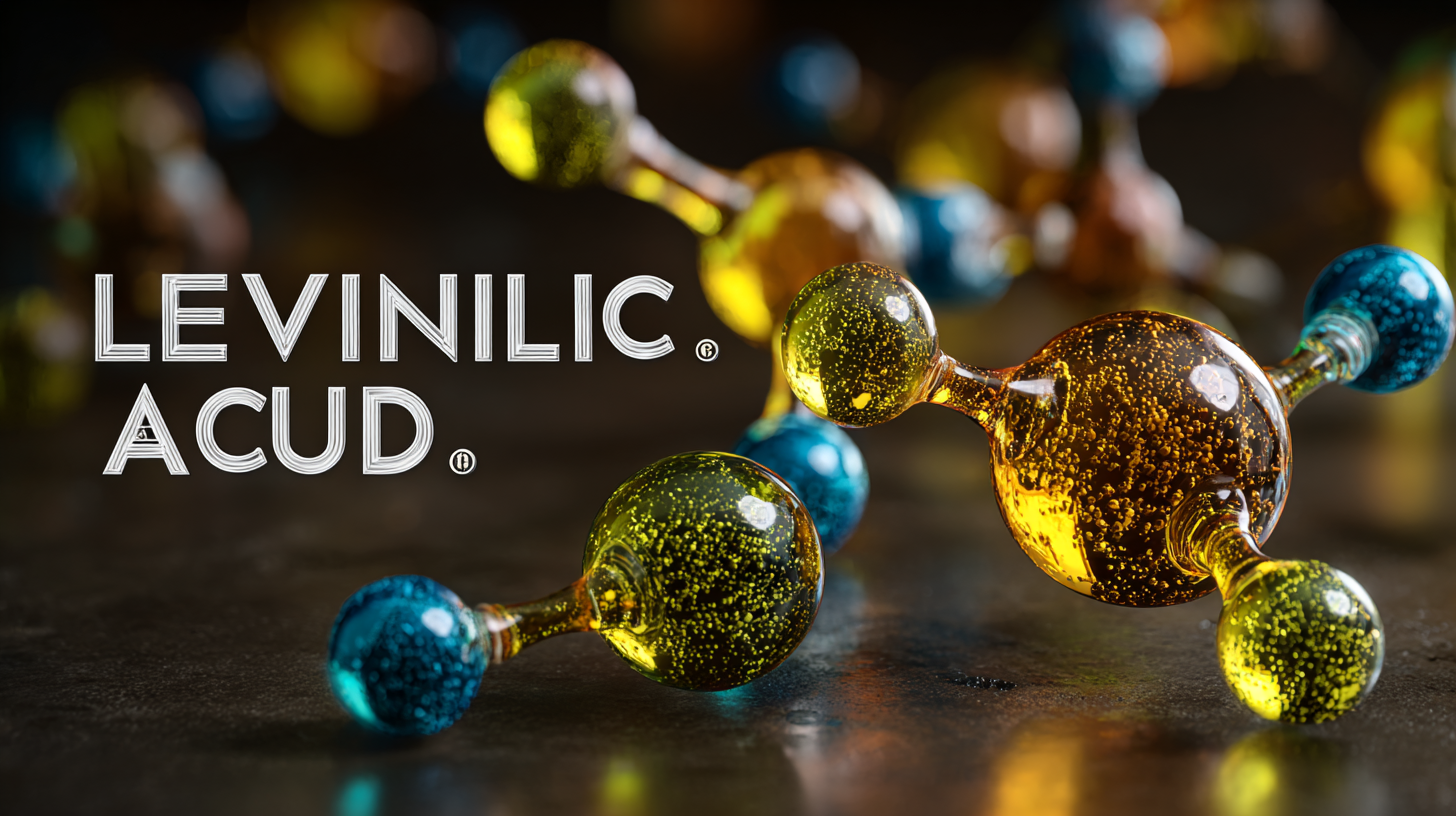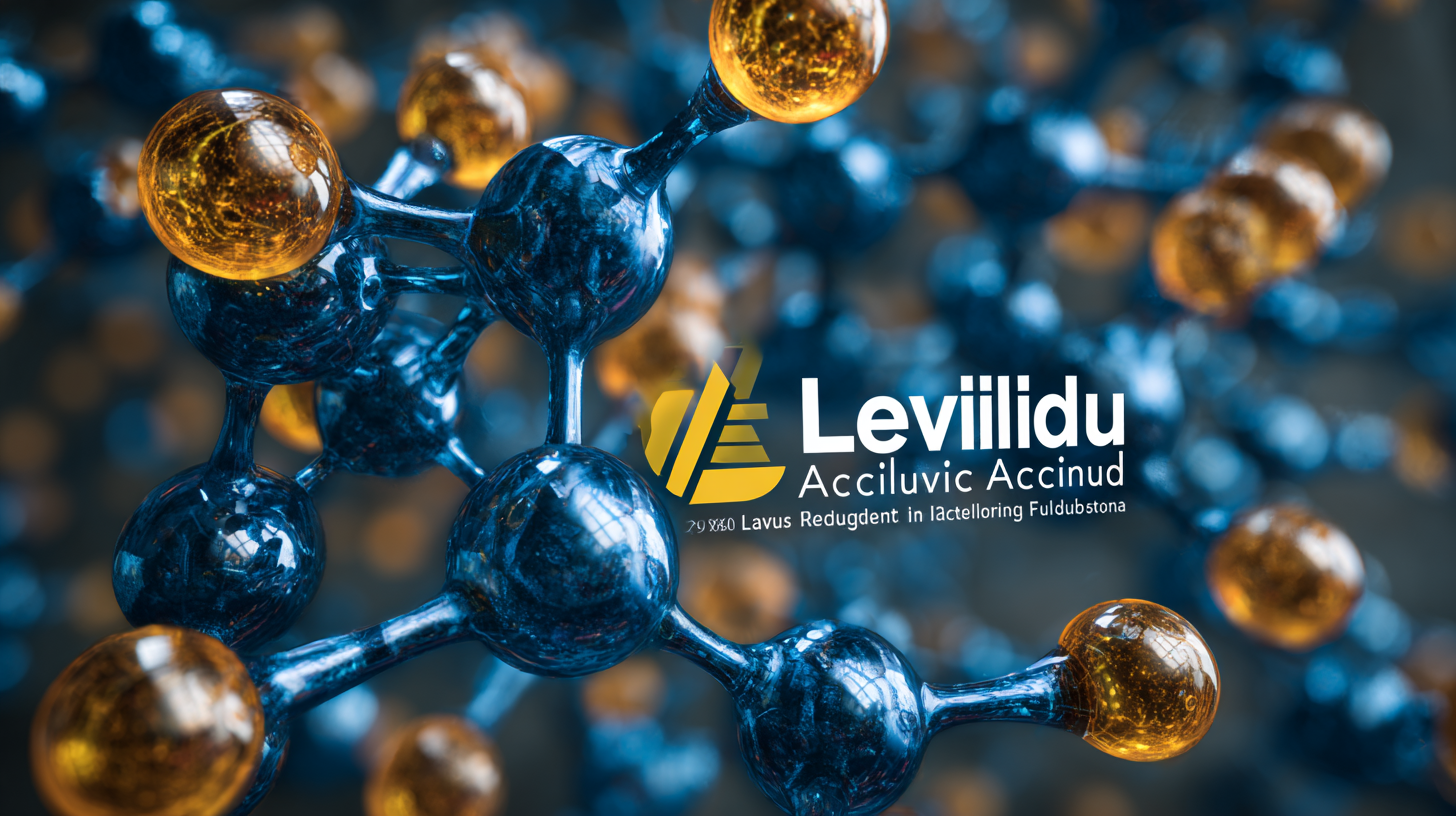
News
Exploring Industrial Applications of Best Levulinic Acid: Overcoming Challenges in Biofuel Production
The increasing demand for sustainable energy solutions has propelled research into alternative biofuels, with Levulinic Acid emerging as a promising candidate due to its versatility and potential profitability. According to a recent report by Allied Market Research, the global biofuel market is expected to reach $218.7 billion by 2024, growing at a CAGR of 5.74% from 2017 to 2024. This growth underscores the need for efficient production methods that can mitigate the economic and technical challenges faced in the biofuel industry. Levulinic Acid, derived from lignocellulosic biomass, not only serves as a building block for biofuels but also has applications in food and pharmaceuticals, enhancing its market appeal. However, current production processes still struggle with issues of scalability and cost effectiveness, which must be addressed to fully capitalize on its potential. This blog will delve into the industrial applications of Levulinic Acid while exploring how overcoming these challenges can contribute to the future of biofuel production.

Benefits of Levulinic Acid in Enhancing Biofuel Efficiency
Levulinic acid is emerging as a crucial component in enhancing the efficiency of biofuels, primarily due to its versatile properties derived from renewable biomass sources. As the global community increasingly turns to sustainable energy solutions, biofuels provide an attractive alternative to conventional fuels due to their biodegradability and reduced carbon footprint. The integration of levulinic acid into biofuel production not only improves the energy yield but also offers a way to convert abundant lignocellulosic waste into valuable energy resources.
Recent studies have highlighted innovative methods for producing levulinic acid, such as wet torrefaction of biomass waste. This process not only facilitates the transformation of agricultural and forestry residues into high-quality hydrochar but also generates significant quantities of levulinic acid, which can be utilized directly in biofuel applications. By utilizing these bioprocesses, we can address some of the challenges faced in biofuel production, including resource scarcity and environmental impact, thus paving the way for a more sustainable energy future.
Leveraging Levulinic Acid to Address Biofuel Production Challenges
 Levulinic acid, a versatile biomass-derived platform chemical, holds great promise in addressing the challenges faced in biofuel production. As the demand for sustainable energy sources continues to rise, the conversion of agricultural waste into valuable chemicals like levulinic acid provides an innovative pathway to support the biofuel industry. This organic compound can be transformed into a variety of fuel components, including biofuels and biogasoline, effectively enhancing the overall efficiency of biofuel production processes.
Levulinic acid, a versatile biomass-derived platform chemical, holds great promise in addressing the challenges faced in biofuel production. As the demand for sustainable energy sources continues to rise, the conversion of agricultural waste into valuable chemicals like levulinic acid provides an innovative pathway to support the biofuel industry. This organic compound can be transformed into a variety of fuel components, including biofuels and biogasoline, effectively enhancing the overall efficiency of biofuel production processes.
One of the primary challenges in biofuel production is the need for efficient conversion processes that minimize waste and maximize output. Leveraging levulinic acid can significantly improve the yield and quality of biofuels by providing a reliable intermediate that can be further refined into high-energy products. Additionally, the use of levulinic acid can help reduce reliance on fossil fuels while promoting a circular economy based on renewable resources. By integrating this compound into biofuel production strategies, the industry can not only overcome existing technological barriers but also create a more sustainable and environmentally-friendly energy landscape.
Innovative Industrial Uses of Levulinic Acid Beyond Biofuels
Levulinic acid, a versatile platform chemical derived from lignocellulosic biomass, is gaining recognition for its innovative applications beyond biofuels. While its potential in the biofuel sector is well-documented, industries are increasingly exploring its utility in producing biodegradable plastics and food additives. In the realm of biodegradable polymers, levulinic acid serves as a building block for creating eco-friendly materials that can help curb plastic pollution. By integrating this renewable resource into plastic production, manufacturers can reduce their reliance on fossil fuels and enhance the sustainability of their products.
Another promising application of levulinic acid lies in the production of flavoring agents and preservatives. The compound can be converted into various derivatives that impart unique flavors while extending shelf life in food products. This not only appeals to health-conscious consumers seeking natural ingredients but also opens up new market opportunities for producers looking to differentiate their offerings. As industries continue to innovate, levulinic acid stands poised to play a critical role in advancing sustainable practices across multiple sectors, reflecting a shift towards greener chemistry and more responsible manufacturing processes.
Exploring Industrial Applications of Best Levulinic Acid
| Application Area | Description | Advantages | Challenges |
|---|---|---|---|
| Biofuel Production | Utilization of levulinic acid in the synthesis of advanced biofuels. | Renewable, low carbon footprint, and potential for high energy output. | Cost of production and scaling challenges. |
| Solvent Production | Levulinic acid as a green solvent in chemical processes. | Non-toxic, biodegradable, and efficient in replacing conventional solvents. | Regulatory hurdles for solvent approvals. |
| Polymers | Incorporation of levulinic acid in biopolymer synthesis. | Biodegradable alternatives to petroleum-based plastics. | Material performance and market acceptance. |
| Food Industry | Use as a food additive and preservative. | Natural preservation and enhanced flavor profiles. | Consumer perception and regulatory compliance. |
| Pharmaceuticals | Application in drug formulation and synthesis. | Potential for improved drug efficacy and safety profiles. | Research and development costs. |
Analyzing the Environmental Impact of Levulinic Acid in Biofuel Production
The conversion of lignocellulosic biomass to levulinic acid (LA) presents numerous opportunities in the field of biofuels, but it is essential to analyze its environmental impact. Levulinic acid, recognized as a versatile platform chemical, holds the potential to be derived from sustainable sources such as agricultural residues. Recent studies suggest that the production of ethyl levulinate from Colombian rice straw is not only technically feasible but economically viable, with a significant reduction in carbon emissions compared to traditional fossil fuels. This aligns with the findings from biorefinery systems, which emphasize achieving sustainability while maximizing resource efficiency.
Moreover, the integration of advanced catalysts, such as mesoporous stannosilicates, has demonstrated promise in enhancing the esterification process of levulinic acid with various alcohols, thus improving yield and minimizing waste. According to recent reviews, levulinic acid stands out as one of the top-12 platform chemicals, critical for synthesizing biofuels and other valuable chemicals, while minimizing environmental degradation. These advancements highlight a transformative shift towards a bio-based economy, where levulinic acid could play a pivotal role in mitigating the challenges associated with fossil fuel dependency and promoting eco-friendly fuel alternatives.

Strategies for Maximizing the Economic Potential of Levulinic Acid in Industry
Levulinic acid is gaining attention as a versatile platform chemical with the potential to transform various industrial applications, particularly in biofuel production. Recent studies highlight that this substance, derived from lignocellulosic biomass such as bagasse, could significantly reduce the chemical industry's dependence on fossil fuels—estimations suggest this could lower greenhouse gas emissions by up to 70% in certain production processes. By efficiently converting agricultural waste into levulinic acid, industries can harness the benefits of renewable resources, paving the way for a greener future.
To maximize the economic potential of levulinic acid, companies need to adopt innovative strategies that overcome production challenges. For instance, implementing advanced catalytic processes can increase yield rates and reduce production costs. According to a recent market report, the global levulinic acid market is projected to reach approximately $226 million by 2027, reflecting an annual growth rate of about 7%. This growth underscores the need for industries to invest in research and development, thereby optimizing extraction methods and application processes. Emphasizing sustainability not only aligns with regulatory trends but also meets the growing consumer demand for environmentally friendly products, positioning businesses favorably in an evolving market landscape.





